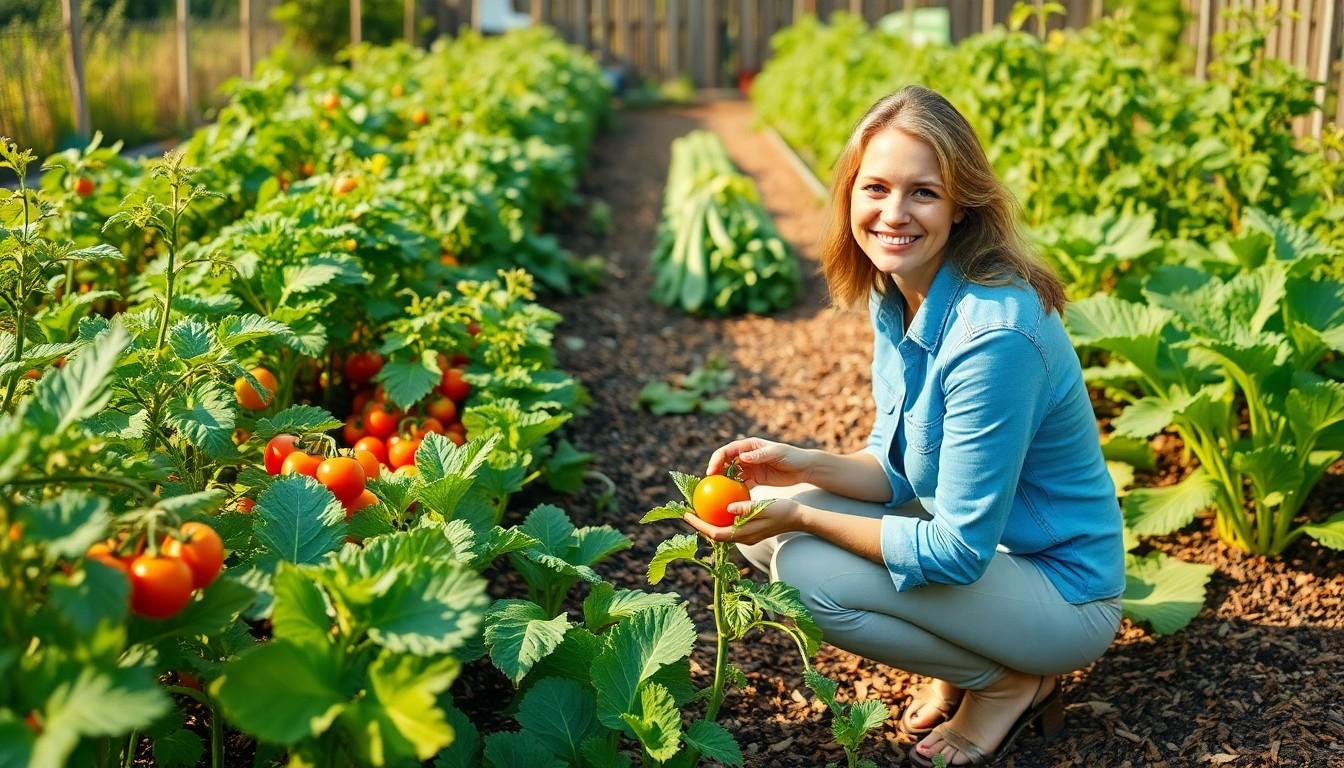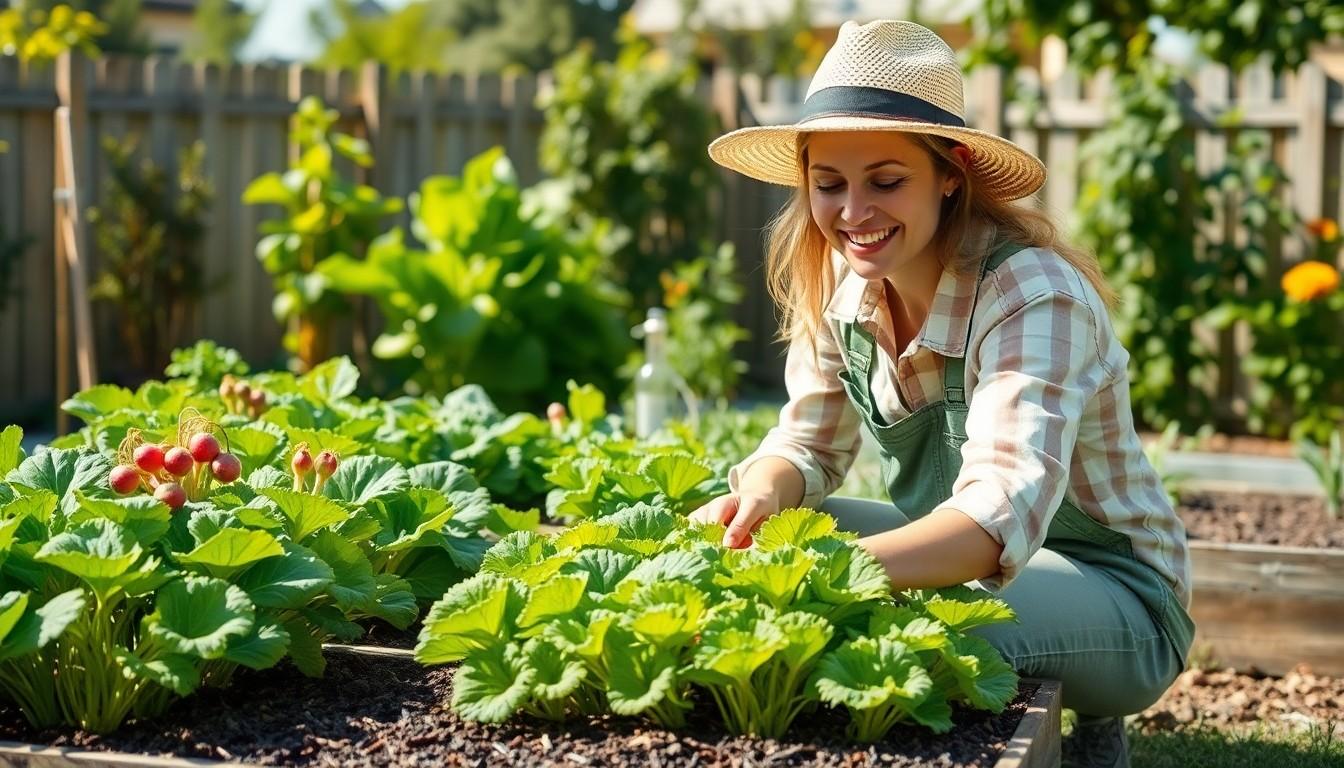The Best Fluffy Pancakes recipe you will fall in love with. Full of tips and tricks to help you make the best pancakes.

Low Maintenance Vegetable Garden: Grow Fresh Produce Effortlessly with These Simple Tips
Imagine strolling through a garden bursting with fresh veggies while barely lifting a finger. Sounds like a dream, right? With a low maintenance vegetable garden, that dream can become a reality. It’s all about growing delicious produce without turning into a full-time farmer. Who wants to spend weekends sweating in the sun when you could be enjoying a cool drink instead?
What Is a Low Maintenance Vegetable Garden?
A low maintenance vegetable garden consists of crops that require minimal effort to grow and maintain. This gardening approach caters to busy individuals or those who prefer to spend time enjoying their outdoor space rather than laboring in it. Typically, it includes hardy varieties that thrive in various climates and conditions, reducing the need for constant attention.
Vegetables such as tomatoes, zucchini, and kale fit well in this type of garden. These plants often resist common pests and diseases, which cuts down on the time spent managing threats. Additionally, incorporating perennial vegetables can enhance the garden’s sustainability, as they do not require replanting each year.
Soil health plays a crucial role in ensuring low maintenance. Utilizing organic mulches and compost can improve soil structure and boost nutrient levels, leading to healthier plants that require less water and fertilizer. Crop rotation and companion planting also contribute positively by minimizing weed and pest issues.
Selecting the right tools can further simplify gardening tasks. Tools designed for ergonomic use reduce physical strain and speed up processes such as weeding and harvesting. Automated irrigation systems assist in providing adequate moisture without daily monitoring.
Ultimately, a low maintenance vegetable garden allows for an enjoyable gardening experience through smart choices and strategic planning. Successful gardens yield fresh produce with less hassle, benefiting both the gardener and the environment.
Benefits of Low Maintenance Vegetable Gardens

Low maintenance vegetable gardens offer various advantages, enhancing the gardening experience while maximizing productivity. Key benefits include time savings and cost-effectiveness.
Time Savings
Lower time requirements facilitate more enjoyment for gardeners. Quick-growing vegetable varieties, such as radishes and lettuce, allow for faster harvests. Minimal weeding efforts lead to a more relaxed gardening routine. Reduced need for frequent watering eases the time spent on maintenance. Choosing robust plants reduces the incidence of pests or diseases, translating to lower management time. With smart planning, it’s feasible to design a garden that thrives with minimal attention, freeing up hours to focus on other activities.
Cost-Effectiveness
Gardening expenses tend to decrease with a low maintenance approach. Fewer inputs like fertilizers and pesticides lead to reduced costs over time. Selecting hardy vegetables means lower replanting costs due to increased resilience. Utilizing mulch and compost not only enriches the soil but also eliminates the need for expensive soil amendments. Automated irrigation systems enhance efficiency while saving both water and money. Overall, durable plants and strategic practices ensure a budget-friendly gardening experience, maximizing the return on investment while enjoying homegrown produce.
Tips for Creating a Low Maintenance Vegetable Garden
Creating a low maintenance vegetable garden involves thoughtful planning and strategic choices. These decisions significantly affect the ease of gardening and the quality of harvest.
Choosing the Right Location
Selecting a location with ample sunlight is crucial. Vegetables typically thrive in areas with 6 to 8 hours of direct sunlight daily. Drainage also plays a vital role; elevated or well-drained garden beds prevent waterlogging. Proximity to a water source simplifies irrigation tasks, reducing labor. Consider wind protection to safeguard delicate plants from harsh conditions. Lastly, maintaining accessibility eases the gardening process, encouraging routine upkeep.
Selecting Low Maintenance Varieties
Opting for low maintenance vegetable varieties enhances gardening efficiency. Tomatoes and zucchini exemplify easy-to-grow options, resisting pests and diseases effectively. Kale offers resilience and quick growth, yielding multiple harvests annually. Other suitable choices include beans, which require minimal care and promote nitrogen fixation in the soil. Herbs like oregano and thyme thrive well with limited intervention. These selections lead to fewer inputs, allowing gardeners to focus on enjoying their harvest rather than laboring over their plants.
Essential Tools and Supplies
Creating a low maintenance vegetable garden necessitates a few essential tools and supplies. These items simplify tasks and enhance the gardening experience while ensuring optimal growth conditions.
Soil Preparation
Proper soil preparation lays the foundation for a successful garden. Utilizing a garden fork or tiller helps loosen compacted soil, making it easier for roots to grow. Adding organic matter, such as compost or aged manure, enriches soil quality and boosts nutrient levels. Incorporating mulch, like wood chips or straw, conserves moisture and suppresses weeds effectively. Testing soil pH with a home kit allows gardeners to adjust conditions to support healthier crops. Selecting the right planting spots, known for good drainage and sunlight exposure, leads to better outcomes.
Watering Solutions
Implementing effective watering solutions ensures plants receive adequate moisture with minimal effort. Drip irrigation systems provide water directly to plant roots, reducing evaporation and runoff. A hose with a spray nozzle allows for quick adjustments while watering larger areas. Incorporating rain barrels collects rainwater, promoting sustainable practices and reducing water costs. Using soaker hoses further distributes moisture evenly across rows of vegetables, minimizing the need for frequent hand watering. Automated timers optimize watering schedules based on plant needs, allowing for a hands-free approach that saves time and effort.
Maintenance Strategies
Efficient maintenance strategies simplify the care of a low maintenance vegetable garden. Implementing techniques like mulching and pest control greatly reduces the time and effort required.
Mulching Techniques
Using organic mulches like straw, wood chips, or leaves conserves moisture in the soil. These materials not only suppress weeds but also gradually improve soil health as they decompose. Applying a layer of mulch around plants retains water and minimizes evaporation, keeping the roots cool during hot weather. Adding mulch also creates a barrier against soil-borne diseases and pests, fostering healthier plant growth. Ensuring a thickness of 2 to 4 inches effectively controls weeds while enhancing the garden’s overall appearance.
Pest Control Methods
Implementing natural pest control methods helps manage insect populations without harsh chemicals. Introducing beneficial insects, such as ladybugs and lacewings, effectively controls aphids and other common pests. Creating habitats with flowering plants attracts these allies, promoting a balanced ecosystem. Planting aromatic herbs, like basil and mint, also deters pests while enhancing garden aesthetics. Regularly inspecting plants for signs of trouble allows for early intervention, ensuring healthy crops. Using row covers can physically block pests, providing a proactive approach to safeguarding plants.
Conclusion
Creating a low maintenance vegetable garden is an excellent way to enjoy the rewards of gardening without the burden of excessive labor. By selecting the right plants and employing effective strategies like mulching and companion planting, anyone can cultivate a thriving garden that requires minimal upkeep.
With thoughtful planning and the right tools, it’s possible to reap the benefits of fresh produce while spending more time relaxing in the garden rather than working in it. This approach not only enhances the gardening experience but also promotes sustainability and cost-effectiveness. Embracing a low maintenance garden can transform how individuals interact with their outdoor spaces, making gardening accessible and enjoyable for everyone.
